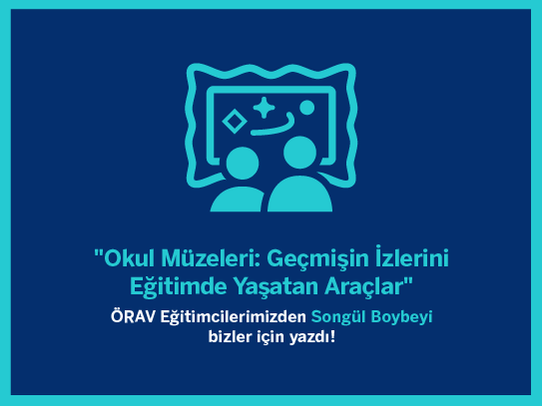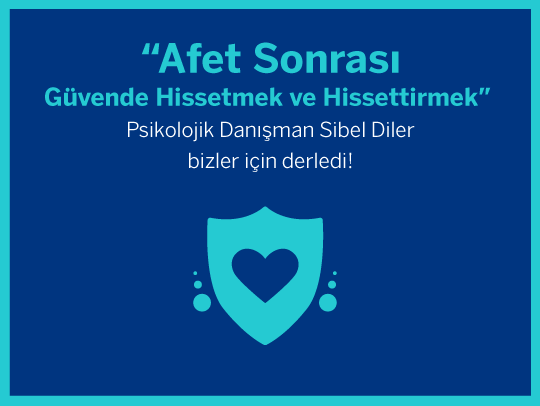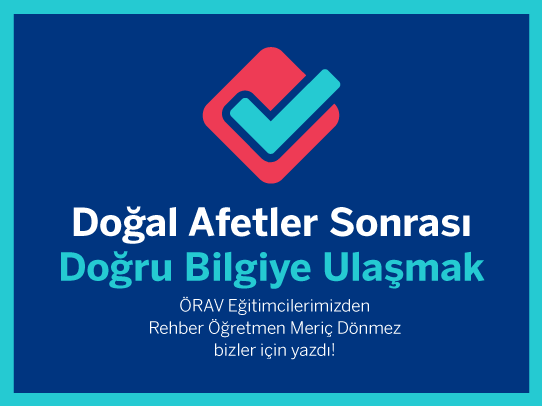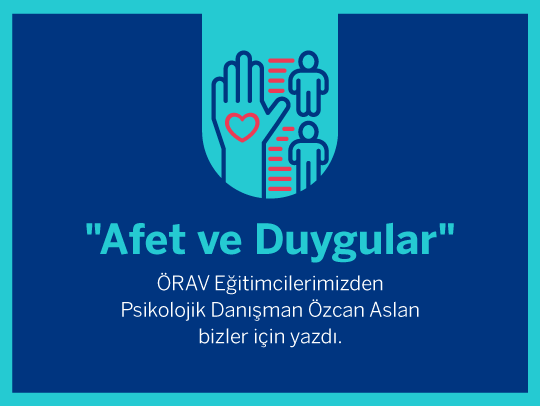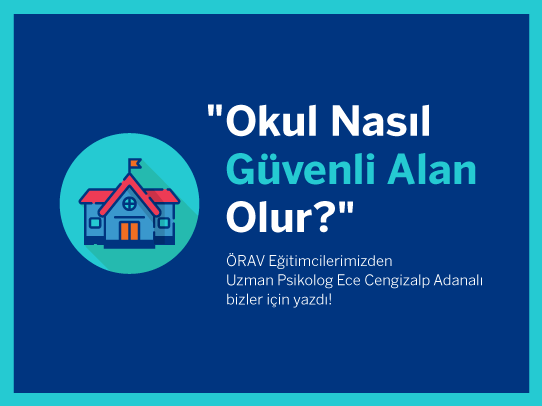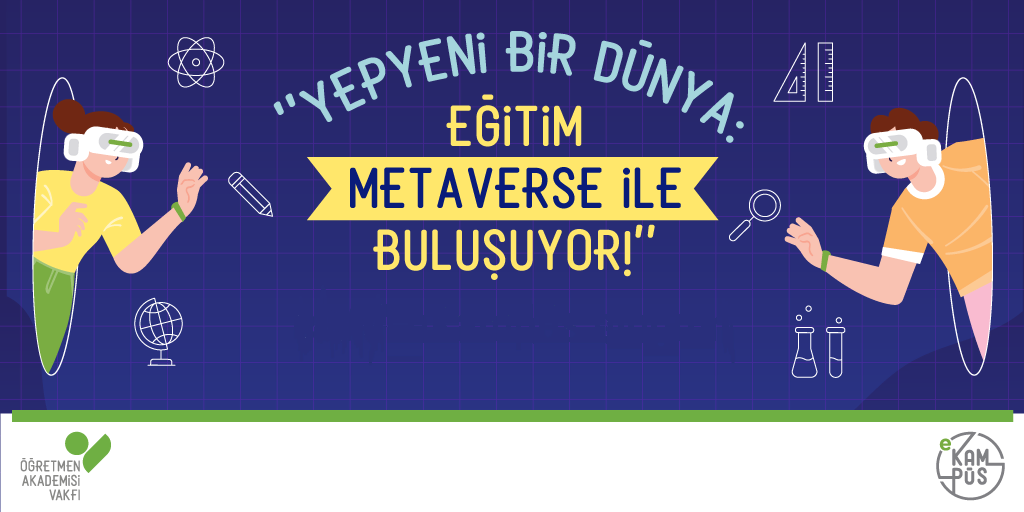 07 October 2022
07 October 2022
The Metaverse is about to become as ubiquitous in our lives as TikTok, Instagram and Facebook (Meta).
Technology is advancing to bring us new, immersive and imaginative worlds, opening up new opportunities for humanity. How we prepare children and teachers to meet these new opportunities must advance at the same pace.
When education lags behind digital advances, many important developments that count as educational opportunities become defined by technology rather than educators.
Educational apps on smartphones and tablets designed for adult use are a clear example.
Today, as the metaverse is still a field that is still being studied and open to development and contribution, it offers researchers, educators, policy makers and digital designers the chance to lead developments in this field without getting caught up in a digital frenzy.
To harness the potential of the metaverse as a 3D, global, interconnected, immersive and real-time online space, we need new ways of combining the physical world with virtual reality (VR) experiences.
In this text, we will present a roadmap on how to bring good and quality educational practices into the virtual world.
In order to guide the design of new educational technology, we will share with you the principles we have drawn from what and how children learn. We will also suggest new methods for designing in this new virtual universe.
Finally, we will show how educational product manufacturers, educators and scientists can collaborate together in this new virtual universe for children to experience real social interaction while navigating virtual spaces.
Imagine being in such a classroom!
Imagine a classroom in the shape of a circle with whiteboards and chairs on the walls. In this classroom, students are being told stories from Greek mythology, such as Zeus and Hercules. Meanwhile, a timeline is projected on the floor of the classroom. Gathered around this timeline, the children are ready to take a journey into the past and go back to the year 300 BC to learn many new things. For this, they only need to move their chairs. Thus, with a single movement, they enter the virtual universe of Ancient Greek culture. They find themselves in a marketplace in ancient Greece. Merchants in the marketplace suddenly surround the students. On the hills around the market place, they see the temples of the Ancient Greek gods and the people worshipping them. While all this is going on, the students are researching, asking questions, thinking and most importantly, learning by having fun.
This learning experience is designed to increase students' curiosity and excitement for learning.
However, as the lesson continues, the students are asked "How can we know the richness of life in ancient Greek culture? If we don't live there, how can we discover what was sold in the market and which gods were important to the people?".
The teacher then places each student in turn on a timeline on the floor. The students see that the walls, ruined old temples and pillars around them suddenly turn into a cloud of brown dust. In the virtual universe inside this cloud of brown dust, the teacher assigns each student the task of designing their own avatars to find the answers to their questions and use what they have learnt as an archaeologist.
Each archaeologist avatar has excavation tools and an excavation site for excavation, just as it should be in the real world.
When the students start working in their excavation sites, the teacher continues to explain: "The civilisation you have just observed in the marketplace has been buried in the ground like many other societies of the past. Now you will find answers to your questions and learn history by removing the layer of soil on a civilisation and bringing together the findings you have obtained."
Children move their avatars in the virtual universe and examine the soil carefully and curiously. In the excavation site they examine, they find pottery shards and even statues that once stood upright. After researching the soil in the excavation area for about 20 minutes, the students then show what they have found to their classmates. Thus, they learn to learn by experiencing together.
When the students put together the pieces they find in the excavation area as if they were solving a historical puzzle, they can obtain a vase and a statue.
Thanks to these sculptures, students learn about the religions and lifestyles of past civilisations.
This deep and meaningful learning experience, which will have a lifelong impact on students, becomes a reality thanks to the metaverse, that is, the virtual universe presented in a game environment guided by the teacher.
However, two important points should be emphasised here. Firstly, care should be taken to ensure that the interactions experienced by students throughout this learning process are just like socialising with a real person. The second is to remember that teachers are the most important element in such a meaningful and productive learning experience.
We should think about how the learning experiences to be experienced in the metaverse, which we define as a virtual universe, will make them more qualified without removing them from education, based on the fact that students learn through social interaction.
Defining the Metaverse (Virtual Universe)
Leaders in the field of technology have defined the metaverse. Forbes magazine also brought these definitions together. These definitions lead to the common definition that the metaverse is a space where the virtual and the real coexist.
As sociologist Ray Oldenburg states, the metaverse creates a "third new space" that is not yet in our lives, such as home or work. The metaverse of the future is expected to fully encompass augmented and virtual reality, artificial intelligence and the network that connects the world in a virtual environment.
In the future, everyone will be able to create a space for themselves in this virtual universe, share their games and possessions with the whole world, and have the opportunity to be part of a global community created by different users on a multi-platform. 5G internet speed will also help all this to happen.
In fact, we can hear the footsteps of the metaverse in many applications such as Minecraft, Fortnite and Roblox. For example, Roblox is a game where you can design your own avatars, houses and streets and play online with players from different parts of the world. You can shop in the market you designed with a player from India. Roblox, one of the most demanded applications by users today, increased the number of games in its content by 19 per cent compared to 2019 and increased the number of active users to over 42 million. This situation seems to be an indicator of how warm the idea of virtual universe is to people.
On the other hand, the metaverse platform called Virbela offers its users virtual meeting rooms and even spaces where they can organise special occasions such as weddings.
In addition, the famous brand Nike became the favourite of many players by creating Nikeland in Roblox. It is the best example of the effort to be visible in the virtual world as well as the real world for the Nike brand.
As VR platforms become easier to use and more connected, we are all sure that they will offer better opportunities.
Also in the future, VR accessories such as VR headsets can be expected to expand their use and even be adapted to educational environments.
It is therefore crucial that researchers and educators work together with designers to ensure that future educational products are optimised to a high quality.
Learning from Web 2.0 and the Development of "Educational Apps"
In 1997, Nokia presented the first mobile application of a game called Snake on its 6110 phone. Then, with the launch of the iPhone in 2007, iPads came to the market in 2011. After these developments, the app and game industry started to gain significant popularity and development.
When our research team prepared a report on educational apps in the digital space in 2015, the sector was flooded with more than 80,000 so-called educational apps.
The vast majority of these apps had no research into how children learn, either in their design or in the making of their apps.
This shows that these apps were not designed to provide educational opportunities for children, but rather as platforms for adult use.
Even now, designers are comfortable using the term "educational" to describe the products they develop. Yet these are products that many scholars consider to have only a passing connection to anything to do with education.
In this chapter we propose four principles for creating good educational practice. These principles are based on scientific evidence about how children learn. These principles are
Learning is not a passive but an active process. Children learn best when their minds are active. This means that a simple swipe in the digital environment does not count as an "active" movement in the educational environment.
The app should be engaging rather than distracting and should include only sounds adapted to the narrative of the game, lesson or story. Many of the apps on the market interrupt the story by including persuasive adverts to probe children's vocabulary (e.g. "What else is red and starts with the letter B?") and to distract children from purchasing a different app.
The app should address something meaningful to the child. It should have a connection point that allows children to relate the content of the app to what they already know, rather than starting something brand new in an unfamiliar domain.
Finally, the app should encourage social interaction inside or outside the app space, not just solitary play.
The list of principles above was extended in 2018 to include that learning should be iterative, in order for an app to encourage children to achieve the goal of learning in a different way, or to allow for a similar but slightly different experience with each encounter. We should therefore add the principle that good educational practice should be iterative.
Finally, children are motivated by happiness and learn better. Therefore, the learning experience should make them happy. The last principle to be added to the principles of good educational practice is that it should make children happy.
Together with the principles of active, participatory, meaningful, socially interactive, iterative and happy, they converge in the idea of what we call "playful learning", a science-based umbrella term that broadly encompasses how children learn through both free play and guided play.
However, the trick to making these practices truly educational requires an additional step. Whether the learning is STEM (science, technology, engineering and maths), literacy or "learning to learn" skills such as memory, attention and flexible thinking, the most fun activity happens when there is a well-articulated learning goal.
Until 2021, our team, led by Marisa Meyer and Jenny Radesky, looked at the most downloaded educational apps from places like Google Play and the App Store to see if the principles mentioned above are becoming more prevalent in existing educational apps for children. Unfortunately, they found that these principles are not yet mainstream.
Fifty per cent of the most downloaded paid apps for young children scored low on these principles, while only seven apps received a score that placed them in the highest quality category. Free apps scored even worse.
As a result, the developers of so-called educational apps and scientists who study how children learn do not use these principles in their apps because they do not communicate among themselves, even though they try to make this possible.
The implication is that the 4-year gap between the time when apps became a common activity for young children and the time when the scientific community was busy was too long.
This time has allowed a proliferation of low-quality apps to be released.
The sheer number of products available has made it difficult for parents and teachers to review apps to find truly educational products.
Now, as the metaverse is being developed, it is imperative that scientists, educators and developers co-construct engaging, comprehensive opportunities that are good for children and families.
Understanding how to support learning goals by harnessing the power of the principles we present here will transform flashy and fun digital experiences into truly educational experiences with real social interaction at their core.
Reframing the Principles of Learning
The principles of how children learn do not change no matter what the environment, classroom, real or virtual.
A range of education stakeholders, including educational scientists, educators and employers, agree that success in the workplace of the future will require mastery of a set of skills, or what the Brookings Institution calls "skills for a changing world".
Skills such as collaboration, critical thinking and creative innovation extend our definition of success beyond core academic subjects such as reading and maths.
In an article published by the Brookings Institution, Hirsh-Pasek and Roberta Golinkoff emphasised the importance of playful learning to enrich a set of skills they call the 6Cs.
A brief description of the 6Cs presented by Golinkoff and Hirsh-Pasek in their book "Becoming Brilliant" follows:
Collaboration: Collaboration reflects how social engagement is central to human nature for learning, community building and cultural understanding. Interestingly, recent neuroscience research shows that cooperative play yields uniquely synchronised brain activity between infants and adults. These early collaborations further support the development of young children's self-regulation skills. Children develop their understanding of co-operation during the primary school years, which supports academic success.
Communication: Speaking, writing, reading and listening are very important in our daily lives. In early childhood, language skills develop through conversations between children and their parents. When children start kindergarten, their language skills at that time are the strongest indicator of their academic performance in reading and maths as well as their social skills. Communication is built on and depends on babies' first co-operative interactions with others around them. The ability to co-operate and communicate together lays the groundwork for all subsequent skills.
Content: Traditional content includes reading, writing, maths, science, social studies and the arts, but it is also important to recognise the "learning to learn" or executive function skills such as attention and working memory that support children's academic success. The content is built on collaboration and especially communication across disciplines, including maths, literacy, science and social sciences. While we often think of "package" learning (for example, children learn maths content only in maths class), a growing body of research shows that executive function provides a broad foundation for reading and maths skills. Only once children have acquired collaboration and communication skills are they ready to specialise in content and progress to higher levels of learning.
Critical thinking: Strong critical thinkers are able to evaluate the quality of the information they receive and ideally use these skills both inside and outside the classroom. But students are particularly tested in this ability when evaluating online resources, an important skill in the 21st century. The good news is that critical thinking and related reasoning skills can be taught. Critical thinking precedes children's ability to collaborate, communicate and engage meaningfully with curriculum content. Once these children have mastered a content, they can begin to think critically about the knowledge they have gained.
Creative innovation: Creative innovation, the synthesis of content and critical thinking, enables students to use what they know to do something new and to develop innovative solutions to challenges they face now and in the future. Play directly supports this innovation in both language and the arts. Moreover, because play encourages curiosity and discovery, it also fosters creativity for any endeavour. In fact, creativity is ranked as the third most important skill for employment according to the World Economic Forum. Creative thinking depends on collaboration, communication, adequate content knowledge and the ability to critically engage with content by seeing connections between it and real-world experiences. Creativity allows children to make new things out of these connections and find original solutions to problems.
Self-confidence: Children who are confident in their abilities are calm even when faced with failure. Confidence is closely related to "perseverance and passion for long-term goals" and "courage", which is defined as "the mindset of development". Parents' attitudes towards their children's performance are also decisive for children's views of their own abilities. I am good at this or I am not talented at all. This sometimes leads to the development of a fixed mindset about their abilities, as opposed to growth. Therefore, children's interactions with others help to shape their perceptions of their own abilities. The final skill, self-confidence, enables children to use collaboration, communication, content mastery, critical and creative thinking skills to push the boundaries of learning.
Taken together, learning through play and the 6C system provide a systematic checklist of what children learn, can learn and should learn.
Once the formula is clear, it is easy to mould the virtual environment to fit the best principles for learning.
A metaverse can be designed to provide experiences that enable and encourage collaboration, communication, content mastery, creative thinking, creative innovation and trust.
The following (Figure 1) presents checklists for the characteristics of an enjoyable learning and 6C system. With a well-defined learning goal, if designers and educators use this checklist, they can determine whether the virtual space they are designing will be truly educational or simply enjoyable.
Figure 1. How Do Children Learn What?
When we revisit the previous Ancient Greek mythology lesson, it was fun, active and the students' minds were wide open. It attracted children's attention without distraction. It was also socially interactive. It also encouraged the students to create the project together and to communicate with each other within the framework of history, archaeology and STEM content. The students were able to use critical thinking when basing their conclusions after the excavation on their opinions about the artefacts. The learning objective proved to be a good method for spatial learning, critical reading through discovery and using STEM skills. In addition, the teacher guided the class and guided the students continuously in accordance with the lesson plan.
As an alternative, consider a well-designed and gamified virtual space. There is marvellous and relevant content to explore in this space. The most important point in such a design is to attract children's attention and prevent distraction.
Therefore, metaverse learning spaces should be in line with the science of how children learn. Now is the time to design educational spaces where children are at the centre!
Where the Metaverse Meets the Principles of Learning: Hope and Anxiety
Hope
The metaverse is an immersive context that can bring the best of digital technologies into education, if done right with learning science and children in mind. Because if we analyse the possibilities, it is clear that games or activities in the metaverse hold the promise of being active rather than passive.
Children can easily explore this space "physically" and mentally. But whether this process is engaging or not will be in the hands of the developer. As with apps, factors that attract children's attention but interrupt the experience in a way that prevents interaction should be avoided. Children cannot learn when we interrupt a narrative or give them too many choices in the plot. Therefore, designers should create a storyline that flows without diverting the child's attention to a new and irrelevant task or place.
The problem of meaningfulness should be easily solvable in the virtual universe. If something is well connected to the child's real or imagined world, it can create a mental network to support deep learning. In a review, Hopkins and Weisberg investigated whether children can transfer information from fantasy in books to real world contexts. According to the data, it was found that they could. This result also reflects findings regarding young children's ability to transfer newly learnt information from television. However, another study implies that children may learn more from fantasy because fantasy can enhance learning in unfamiliar contexts. In more recent research, Hopkins and Weisberg reaffirmed this hypothesis when testing five-year-olds' learning of scientific principles.
The more difficult question to ponder is what exactly is meant by creating a social environment for children in the metaverse. The example presented above provides only a glimpse of what might happen if the games created are not for consumption per se, but are directed by teachers to be engaging. Research in science on how and what children learn shows that social relationship building underpins all learning. An infant interacting with a parent has well-timed, conditioned, semantically appropriate and emotionally congruent responses. The research also suggests that stronger synchronisation between caregiver and child supports early learning as well as brain development.
Even at the age of two, a virtual impersonator is no substitute for a real person, even if it best reflects the human being. Studies from our lab suggest that reading with a parent at the age of four teaches children more than reading alone, and that physiological stimulation and the parent's self-reported emotion create a special bond that occurs between child and parent.
A recent study on human learning with digital learning confirms this claim. Finally, even in the lives of older children this synchronisation plays an important role. Lamb and colleagues' paper reveals that when primary school teachers and students are together verbally and socially, not only do they understand more of the material, but their brain activity is also synchronised.
This result is just the first of many pieces of evidence coming from this emerging approach to using neuroscience research in real-world classrooms. What is so special about social relationships? Why are emotional expression, bonding, touch, smell and body language so important? Perhaps they are so important because they are critical forms of communication that do not exist in a virtual world, or at least not in the metaverse as it is currently conceived.
The virtual environment should not restrict interactions between real people in a real or virtual environment, rather than support interaction. As an example, a class virtually "visiting" Greece together under the guidance of a teacher would retain human interaction even on a digital backdrop, whereas creating their own avatars to go travelling together would not have the same effect. This is why further research in this area is so important.
The world of augmented virtual reality, VR and 3D, promises to take children to new environments that they may never be able to explore or visit. To acquire critical thinking, students encounter real problems that they can solve and share their solutions or findings with others. They can visit different time periods and even enter scientific laboratories to find answers to questions about Greek culture.
Students can be creative and productive little children who can paint and compose with the best teachers. They can even create their own stories from Greek myths that they piece together from historical fragments. The teacher-led metaverse offers a hybrid world with enormous potential if used correctly. And to get it right, teachers will play an important role in guiding immersive learning. Teachers skilled in this area can choose lesson plans based on the interest they observe in their students. These teachers can easily transfer knowledge to their children while helping them navigate areas that can make learning difficult. Teachers can choose virtual spaces that they know will help each child in their class feel represented and have a voice in these spaces. By enabling children to move beyond their comfort zones, teachers can help them deal with academic and social problems by focusing on their strengths or building on areas where they struggle. In this way, teachers can make connections between what children have just learnt and what they already know. The Metaverse does not replace teachers, but instead provides a means by which teachers can deliver learning and social interaction in new ways.
Some research has suggested that many digital games, including Pokemon GO, can increase physical activity for users by encouraging outdoor experiences. Because these games also encourage shared use, many parents report that gaming provides opportunities for family bonding. For example, a study by Jakki Bailey and Jeremy Bailenson of Stanford University suggested that children who saw Grover from Sesame Street in VR were more compliant with his instructions and subsequently gave him more stickers compared to children who saw the same content on a television screen. However, the same children performed worse on a control measure based on Simon Says - perhaps because the environment seemed so real that it was harder to pretend to be Grover. Research on VR with young children suggests that the strongly rich nature of these experiences, children's memories, may shape recall. Other studies suggest that children who read books in augmented reality are more motivated than those who read traditional books, but the results from the two sources are not very different. A study with 6-8 year olds shows that children learn more about physics when they study concepts such as force and friction in augmented reality than in a real environment. Hassinger-Das and colleagues, as well as Hadani and colleagues, present the latest reviews of research on digital technology and child development.
Our Responsibility
However, we may be tempted by new tools. It is therefore imperative to get the social interaction component right from the start. For children and possibly adults, the interaction of avatars - even if they look real - can never replace real human interaction. It will be important to find ways to combine the virtual and real worlds in a way that preserves real teacher-child, carer-child and child-child social relationships. It will also be important to avoid distractions. Games in VR environments are full of story interruptions and distractions. Gamemakers like to add a lot of sound and visuals, often because they think that by adding more design to the game they are providing a better educational experience, but this is not always the case. Anna Fisher of Carnegie Mellon University has suggested that decorations on school walls can be more distracting than informative. Activities and plot pauses disrupt the flow of reading and lead to a decline in story comprehension. Studies from our labs and others on technoference (i.e., moments when adults use technology to text or call, or interrupt possible interactions between parent and child) lead us to the same conclusion. In these situations, children learn fewer words, parents communicate less with their children, and children exhibit more behavioural problems. It will also be critical to ensure that the child has real agency in these worlds as they explore what they need to do to fulfil the learning goal. Finally, it will be crucial to be culturally diverse and inclusive in all play. Indeed, the metaverse can introduce families and children to different perspectives and cultures. We also need to consider issues of access, accuracy and power dynamics when it comes to diversity. Many diverse and marginalised communities, especially in urban and rural areas, may not be able to access and effectively use this new virtual universe. Given how quickly misinformation and inaccurate content can spread through social media, we need to ensure that systems and games are accurate, relevant and supported by authentic, educational and/or historical content. When it comes to people of colour and marginalised communities, the proven and documented shortcomings of today's technologies show that the metaverse may not be a technological utopia for everyone. Problems posed by this new virtual universe include facial recognition software not recognising people with darker skin and/or being sexist in some way. When designing and implementing the metaverse, it is crucial to include people from marginalised communities in these roles to ensure that all users feel safe and valued when participating in this virtual universe.
Back to the Future
And so we return to the white-walled classroom that can transport children to different environments as if they were living on the Magic School Bus. But in this world, Teacher Mrs Frizzle will not be two-dimensional, nor will she be an avatar. A real teacher will help children see beyond their own world, into the future, the past, and even more deeply into the present. Children in this world will have different experiences in foreign countries in the virtual universe, master a broader set of skills such as the 6Cs, and be better equipped to transfer what they have learnt to the real human world. Finally, the metaverse comes to education. The question is whether we as designers, educators and parents can usefully utilise the opportunities that are truly educational in this new and exciting context.
Volunteer Translator: Şevval Tufan
Source: Center for Universal Education at Brookings, A whole new world: Education meets the metaverse, February 2022 Policy brief
